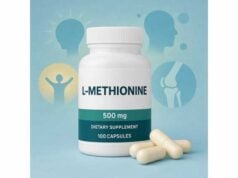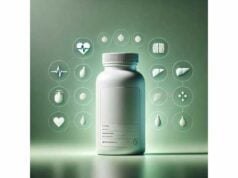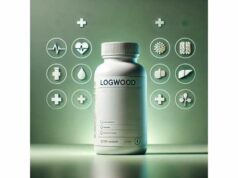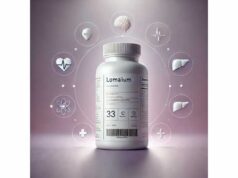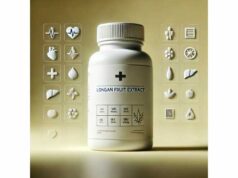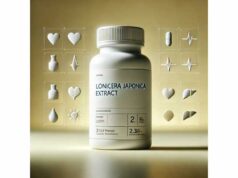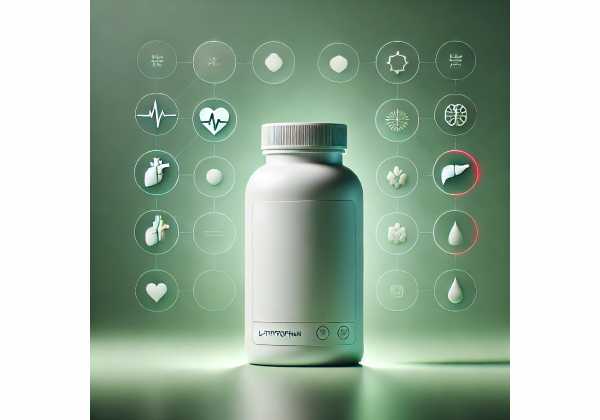
L-tryptophan (often shortened to “tryptophan”) is an essential amino acid—meaning your body cannot make it and must get it from food or supplements. It is best known as the raw material for serotonin and melatonin, two signaling molecules that influence mood, sleep, appetite, and the 24-hour body clock. Beyond neuromodulation, tryptophan feeds into the kynurenine pathway that produces nicotinamide adenine dinucleotide (NAD⁺), a cofactor central to cellular energy. For people exploring natural options to support sleep quality, stress resilience, or a steadier mood, L-tryptophan is frequently considered because its effects are specific, dose-dependent, and—when used correctly—relatively predictable. This guide helps you understand how it works, what the evidence shows, smart ways to take it, who should avoid it, and the safety considerations that matter most, including interactions with antidepressants and the historical eosinophilia-myalgia syndrome (EMS) episode linked to contaminated products in the late 1980s. By the end, you’ll be able to decide—together with your clinician—whether L-tryptophan fits your goals.
Quick Overview
- May improve sleep continuity when taken at ≥1 g near bedtime.
- Can modestly improve mood in healthy adults at 0.14–3 g/day.
- Typical supplemental range: 250–2,000 mg per dose; bedtime timing is common.
- Avoid with SSRIs, SNRIs, MAOIs, triptans, or other serotonergic drugs due to serotonin syndrome risk.
- People with chronic liver disease, active autoimmune illness, or pregnancy should seek medical guidance first.
Table of Contents
- What is L-tryptophan?
- Does it work? Evidence-backed benefits
- How to take it right: forms, timing, and stacking
- Who should and should not use L-tryptophan
- Side effects, interactions, and quality concerns
- Common mistakes, myths, and troubleshooting
What is L-tryptophan?
L-tryptophan is one of nine essential amino acids you must obtain from diet or supplements. In proteins, it is the “W” amino acid (tryptophan’s one-letter code), notable for its bulky indole ring that helps stabilize protein structures. From a health perspective, what makes tryptophan compelling is not only its role in protein building but also the powerful molecules made from it.
Two main metabolic routes convert tryptophan into bioactive compounds:
- Serotonin pathway. A small percentage of tryptophan is hydroxylated to 5-hydroxy-L-tryptophan (5-HTP) and then decarboxylated to serotonin (5-hydroxytryptamine). Serotonin influences mood, social behavior, gut motility, pain perception, and sleep architecture. In the pineal gland, serotonin becomes melatonin, the hormone of darkness, which shapes circadian timing and sleep onset.
- Kynurenine pathway. Most ingested tryptophan is routed through enzymes like indoleamine 2,3-dioxygenase (IDO) and tryptophan 2,3-dioxygenase (TDO), creating kynurenine and downstream metabolites. This pathway intersects with immune signaling and culminates in niacin (vitamin B3) derivatives, ultimately supporting NAD⁺ synthesis.
Because tryptophan shares intestinal and blood-brain transporters with other large neutral amino acids (LNAAs)—like leucine, isoleucine, valine, tyrosine, and phenylalanine—its relative ratio to these competitors affects how much reaches the brain. In practical terms, protein-heavy meals can lower the tryptophan-to-LNAA ratio, while small amounts of carbohydrate can temporarily raise it by driving competing amino acids into muscles, potentially favoring brain uptake.
What makes L-tryptophan distinct from 5-HTP? L-tryptophan is one step upstream, entering either the serotonin route or the kynurenine route; the body regulates that split based on stress hormones, inflammation, and nutrient status. 5-HTP bypasses the rate-limiting step toward serotonin and may act more quickly, but it also has a higher propensity to cause nausea. People who prefer a gentler, more physiologic approach often choose L-tryptophan first.
Food sources include turkey and chicken, eggs, dairy, soy, pumpkin seeds, peanuts, and oats. In supplements, L-tryptophan is typically sold as capsules or powders. Quality matters because trace impurities in the past were implicated in a serious adverse event cluster (discussed under safety).
Taken together, L-tryptophan is a foundational nutrient with targeted neuromodulatory potential when used in the right dose, at the right time, and for the right person.
Does it work? Evidence-backed benefits
Sleep quality and continuity. The best evidence for L-tryptophan is in sleep maintenance. Controlled analyses suggest that supplemental tryptophan can reduce “wake after sleep onset”—the minutes you spend awake after initially falling asleep—especially at doses of ≥1 g. Improvements tend to show up as fewer night awakenings and a steadier second half of the night rather than dramatic changes in latency for most people. Mechanistically, a bedtime dose increases substrate availability for serotonin in brain regions that modulate sleep architecture, and downstream melatonin production may reinforce circadian timing. People who struggle with early-morning awakenings or fragmented sleep often report the most noticeable gains.
Mood and emotional tone. In healthy adults under everyday stress, tryptophan intakes in the 0.14–3 g/day range have produced small but measurable improvements in mood parameters in randomized trials, including reductions in irritability and mild anxiety and increases in positive affect. These effects are usually modest and context-dependent; they are not a substitute for treatment of clinically significant depression or anxiety. Still, in individuals with subclinical mood dips—particularly those whose diets are light on protein or who experience “afternoon slump” irritability—tryptophan may be a sensible adjunct.
Stress resilience and social behavior. Laboratory paradigms have shown that boosting tryptophan availability can influence cooperation, fairness perception, and stress reactivity in some settings. While these experiments are often small and mechanistic, they hint at a broader role for tryptophan in fine-tuning social cognition and emotional regulation through serotonergic circuits.
Gut-brain axis considerations. Tryptophan metabolism is shaped by immune signals and the microbiome. Inflammatory states can shunt more tryptophan down the kynurenine route, reducing what’s available for serotonin synthesis. This may partly explain why stress, illness, or sleep deprivation can change how a given dose feels from week to week. For many people, addressing sleep hygiene, light exposure, and fiber-rich diets can indirectly improve how well tryptophan “works.”
Who notices benefits fastest? Common patterns among responders include: bedtime awakenings, a tendency toward rumination at night, jet lag or shift work, and a diet skewed toward very high protein late in the evening. People who already sleep soundly often notice little change unless they also face circadian disruption (travel, schedule shifts).
What not to expect. L-tryptophan is not a daytime stimulant, cognitive enhancer, or rapid-acting antidepressant. It does not mask severe sleep disorders like obstructive sleep apnea or restless legs syndrome. It also does not replace cognitive-behavioral therapy for insomnia (CBT-I), which remains first-line for chronic insomnia.
Practical takeaway: for sleep maintenance, trial 1,000–2,000 mg 30–60 minutes before bed for 2–3 weeks while supporting sleep hygiene. For daytime mood support in healthy adults, consider 500–1,000 mg once or twice daily with clinician oversight, then reassess.
How to take it right: forms, timing, and stacking
Forms and purity. Look for L-tryptophan (the natural isomer) from reputable manufacturers that provide third-party testing for identity, potency, and contaminants. Certificates of analysis (COAs) from ISO-accredited labs are a plus. Powders allow flexible dosing; capsules are more convenient for bedtime use.
Dosing ranges. Thoughtful ranges balance efficacy with tolerability:
- Sleep continuity: 1,000–2,000 mg taken 30–60 minutes before bedtime.
- General mood support (healthy adults): 500–1,000 mg once or twice daily, typically away from the heaviest protein meal.
- Short “trial dose” for sensitivity testing: 250–500 mg at bedtime for 2–3 nights before titrating.
Start low if you are prone to nausea or morning grogginess. Most people find a single nightly dose sufficient; split dosing (morning + evening) can help in mood-centric protocols but increases interaction risks in those taking serotonergic medications (which should generally be avoided).
Timing strategies. Because tryptophan competes with other LNAAs for transport, a light carbohydrate snack (e.g., fruit or a few oat crackers) 30–60 minutes before a bedtime dose can improve brain uptake for some. Conversely, a very high-protein, late dinner may blunt the effect. Consistency matters—try to take it at about the same time daily for 1–2 weeks before judging results.
Stacking and cofactors.
- Vitamin B6 (pyridoxine/PLP): a cofactor in the conversion of 5-HTP to serotonin. If your diet is marginal, a basic B-complex or 1–2 mg/day of B6 from food/supplements can support the pathway without megadoses.
- Magnesium glycinate or taurate (100–200 mg elemental at night): may complement tryptophan for sleep relaxation.
- Light hygiene: morning bright light strengthens circadian signals and can enhance night-time benefits.
L-tryptophan vs 5-HTP vs melatonin.
- L-tryptophan: broader metabolic roles; gentler onset; best for sleep maintenance and subtle mood support.
- 5-HTP: more direct serotonin precursor; faster onset but more nausea; higher interaction risk at comparable serotonergic levels.
- Melatonin: best for sleep onset and circadian shifts (jet lag, shift work), not maintenance per se.
How long to try it. For sleep, give it 2–3 weeks of consistent use. For mood, 4–6 weeks is reasonable in healthy adults. If no benefit at a well-tolerated dose, discontinue and reassess sleep hygiene, stress load, or alternative approaches.
When to pair with behavioral methods. L-tryptophan works best alongside fundamentals: fixed wake time, daylight exposure, evening screen limits, moderate evening meals, and a cool, dark bedroom. For chronic insomnia, consider CBT-I; for persistent mood symptoms, involve a clinician.
Cycling. Not strictly required, but some rotate 5 nights on/2 off to preserve sensitivity and prevent psychological reliance. If you notice diminishing returns after several months, take a 2–4 week break and re-evaluate.
Who should and should not use L-tryptophan
Good candidates often include:
- Adults with sleep maintenance insomnia (frequent awakenings, early-morning waking).
- Healthy individuals seeking modest mood support during stressful periods.
- Shift workers and frequent travelers who wake too early after schedule changes.
- People sensitive to 5-HTP-related nausea who prefer an upstream precursor.
Proceed only with medical guidance if you:
- Take serotonergic medications: SSRIs (e.g., sertraline, escitalopram), SNRIs (e.g., venlafaxine, duloxetine), MAOIs, tricyclics, certain analgesics (tramadol), anti-migraine triptans, linezolid, or St. John’s wort. Combining serotonergic agents raises the risk of serotonin syndrome, a potentially serious condition marked by agitation, tremor, clonus, sweating, fever, and diarrhea.
- Have bipolar disorder or a history of mania/hypomania. Any serotonergic strategy can, in rare cases, unmask mood elevation.
- Live with chronic liver disease, severe kidney disease, active autoimmune conditions, or systemic inflammation that may alter tryptophan routing into the kynurenine pathway.
- Are pregnant or breastfeeding. Safety data are limited; discuss alternatives with your obstetric provider.
- Are planning surgery requiring medications with serotonergic properties; discontinue supplements well in advance per your surgical team’s instructions.
Young people and older adults. Titrate more cautiously. Teenagers can be sensitive to neuromodulators; start at 250–500 mg if supervised. Older adults may be more prone to morning grogginess; begin at the lower end and take it earlier in the evening (e.g., 1–2 hours before bed) to observe effects.
Athletes. Anecdotally, small pre-sleep doses can steady sleep, which improves recovery. Avoid taking large doses right before training due to potential sedation.
Dietary and lifestyle context. If your evenings feature heavy protein and late meals, try adjusting timing before deciding L-tryptophan “doesn’t work.” If you rely on multiple caffeinated drinks late in the day, reduce caffeine first; otherwise tryptophan may not overcome stimulant effects.
Red flags: stop and seek care if you develop restlessness, shivering, diarrhea, confusion, fast heartbeat, or a high fever, especially if you are on any medication that affects serotonin.
Side effects, interactions, and quality concerns
Common side effects are generally mild and dose-related:
- Sleepiness or morning grogginess (reduce dose, take earlier).
- Nausea or digestive discomfort (take with a small snack; avoid large protein).
- Headache in sensitive individuals (lower the dose, ensure hydration).
- Vivid dreams (often transient; adjust timing if bothersome).
Serious but rare: serotonin syndrome when combined with serotonergic drugs or multiple serotonergic supplements. Symptoms can arise within hours and require urgent medical evaluation. To reduce risk: avoid poly-supplement stacks that include 5-HTP, St. John’s wort, SAMe, or high-dose dextromethorphan. Do not combine with SSRIs/SNRIs/MAOIs or triptans unless your prescriber explicitly coordinates it (which is uncommon outside trials).
The EMS episode: what it means today. In 1989–1990, thousands of cases of eosinophilia-myalgia syndrome (EMS)—marked by severe muscle pain, high eosinophil counts, skin changes, and sometimes lasting disability—were linked to contaminated L-tryptophan batches from a particular manufacturer using altered fermentation and purification. Subsequent investigations pointed toward impurities formed during synthesis. Modern manufacturing has stricter controls, and EMS from current L-tryptophan products is exceedingly rare. Still, quality assurance is non-negotiable: choose brands with transparent supply chains and third-party testing. Avoid gray-market powders and unusually cheap products.
Interactions to know:
- Antidepressants and anti-migraine drugs: SSRIs, SNRIs, MAOIs, tricyclics, and triptans—high risk when combined.
- Opioid-like analgesics and cough suppressants: tramadol, meperidine, and high-dose dextromethorphan can raise serotonergic tone.
- Linezolid and methylene blue: potent MAO inhibitors used in specific medical settings—do not combine without explicit medical oversight.
- Alcohol and sedatives: may compound drowsiness; limit co-use around bedtime.
Lab markers and medical conditions. Because the kynurenine pathway is influenced by immune activity, people with chronic inflammation may notice less of a “serotonin-pathway” effect from a given dose. Addressing sleep debt, stress, and basic nutrition often helps restore balance.
Quality checklist for safer use:
- Reputable supplier with batch-specific COAs verifying identity, potency, and contaminants (heavy metals, microbiology, and residual solvents).
- Reasonable capsule strength (e.g., 500 mg) for flexible titration.
- Clear labeling with L-tryptophan (not DL-tryptophan or racemic mixtures).
- Avoid blends that hide exact amounts or combine multiple serotonergic agents.
If you experience unusual skin changes, severe muscle pain, shortness of breath, or swelling, discontinue immediately and seek care.
Common mistakes, myths, and troubleshooting
“Tryptophan knocks you out instantly.” It’s not a sedative in the classic sense. Most users report subtler effects: fewer awakenings and a calmer night. Expect cumulative benefits over 1–2 weeks, not a knockout on night one.
“More is better.” Doses above 2 g rarely add benefit for sleep and are more likely to cause nausea or morning fog. If you find yourself escalating, step back and optimize sleep hygiene.
“Protein at night enhances tryptophan.” Large protein loads increase competition at transporters. If sleep is your goal, try a lighter, earlier dinner and a small carbohydrate snack with your dose.
“It treats depression.” L-tryptophan may gently improve mood in healthy adults, but clinical depression requires medical care. If you have persistent low mood, loss of interest, sleep/appetite changes, or thoughts of self-harm, seek professional help promptly.
“Natural means safe with my meds.” Natural does not mean free of interactions. Tryptophan plus an SSRI, SNRI, MAOI, or triptan is a classic setup for serotonin toxicity. Always cross-check.
“If I wake at 3 a.m., I should redose.” Mid-night redosing can cause morning hangover. Instead: take your full dose before bed, anchor your wake time, get morning light, and keep the bedroom cool and dark. If early-morning awakenings persist, assess stress load and consider cognitive strategies like scheduled worry time earlier in the evening.
Troubleshooting tips:
- Groggy mornings? Move the dose earlier (60–120 minutes before bed) or reduce to 500–750 mg.
- Nausea? Take with a small snack, avoid concurrent 5-HTP, and split the dose for mood protocols.
- No effect after 2–3 weeks? Reassess dose and timing, trim late caffeine/alcohol, and consider whether circadian issues (late light exposure) are the dominant driver.
Alternatives and complements. For sleep onset problems, low-dose melatonin (0.3–1 mg) or light-based strategies may fit better. Magnesium, gentle breathwork, and CBT-I techniques pair well with tryptophan. If you primarily seek mood support and tolerate it, some choose 5-HTP—but be stricter about interactions and start lower (e.g., 50 mg) due to nausea.
When to stop. Stop if side effects outweigh benefits, if you start a new serotonergic medication, or if your clinician advises discontinuation before surgery or medical procedures.
References
- The impact of tryptophan supplementation on sleep quality: a systematic review, meta-analysis, and meta-regression (2022)
- A systematic review of the effect of L-tryptophan supplementation on mood and emotional functioning (2021)
- Physiology, Serotonin (2023) (Guideline/Overview)
- Safety concerns regarding impurities in L-Tryptophan associated with eosinophilia myalgia syndrome (2023)
Medical Disclaimer
This article is for educational purposes only and is not a substitute for personalized medical advice, diagnosis, or treatment. Do not start, stop, or combine supplements with prescription or over-the-counter medications without guidance from a qualified healthcare professional. If you have concerning symptoms (such as severe insomnia, mood changes, or signs of serotonin toxicity), seek prompt medical care.
If you found this guide useful, please consider sharing it on Facebook, X (formerly Twitter), or your favorite platform, and follow us for future evidence-based articles. Your support helps us continue producing high-quality content.

